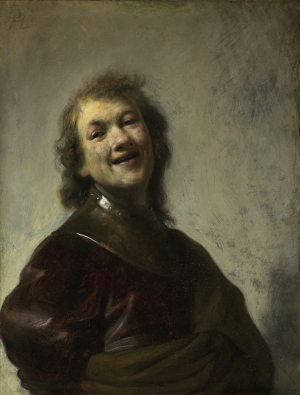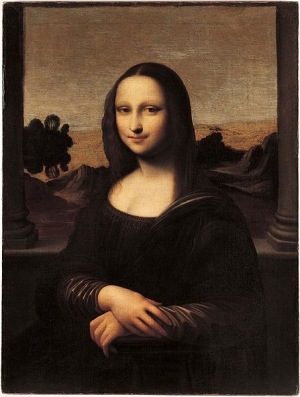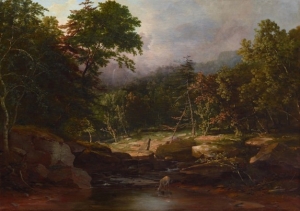|
Displaying items by tag: attribution
Questions have been raised about the authenticity of a group of works attributed to Jackson Pollock, six of which were exhibited at the Art Monaco fair in July by the Nevada-based Classic Fine Art. Around 30 paintings from the group were privately analyzed by Art Access & Research, a UK-based company, in 2010.
The Art Newspaper has seen reports written by Nicholas Eastaugh, the director of Art Analysis & Research (formerly Art Access & Research), examining the pigments used in 23 paintings. Of those, 12 were found to include CI Pigment Yellow 74, which was not commercially available before the Abstract Expressionist artist died in 1956.
A drawing of hell previously attributed to a workshop assistant of Hieronymus Bosch has now been recognized as an authentic work by the master himself according to the experts conducting the Bosch Research and Conservation Project (BRCP) examining the artist's works worldwide.
The drawing has been hidden away in a private collection and will go on public display for the very first time as part of the major exhibition of works by Hieronymus Bosch at the Noordbrabants Museum in Den Bosch opening on February 13, 2016. Art historian and co-ordinator of the BRCP, Matthijs Ilsink, calls the drawing "an extraordinary find."
After five years of examination, the Bosch Research and Conservation Project (BRCP) has determined that two masterpieces attributed to the Dutch artist Hieronymus Bosch were unlikely to have been painted by the master himself.
The results of the research indicate that Bosch's Christ Carrying the Cross (ca. 1515-16) and the world famous The Seven Deadly Sins (ca. 1500)— which hangs in Madrid's Prado Museum—were probably produced in the studio of the artist, but not painted by Bosch himself, the Dutch news agency ANP reports.
A self-portrait by Van Dyck that was dismissed a decade ago as a copy is now hanging in the Minneapolis Institute of Arts, Minnesota, as an original work. The painting, which has been authenticated by experts, was quietly put on display in February, having been lent by a US collector based on the West Coast.
An unpublished paper on the self-portrait, prepared for the owner, dates the work to around 1629 and states that the attribution is accepted by four key experts: Susan Barnes, a co-author of the 2004 Van Dyck catalogue raisonné, Christopher Brown, the former director of the Ashmolean Museum in Oxford, David Jaffé, a former senior curator at the National Gallery in London, and Malcolm Rogers, the outgoing director of the Museum of Fine Arts, Boston.
Two handsome, virile naked men riding triumphantly on ferocious panthers will on Monday be unveiled as, probably, the only surviving bronze sculptures by the Renaissance giant Michelangelo.
In art history terms, the attribution is sensational. Academics in Cambridge will suggest that a pair of mysterious metre-high sculptures known as the Rothschild Bronzes are by the master himself, made just after he completed David and as he was about to embark on the Sistine Chapel ceiling. If correct, they are the only surviving Michelangelo bronzes in the world.
According to Italian art critic and former undersecretary of cultural heritage Vittorio Sgarbi, writing in Corriere della Sera‘s magazine Sette, a painting currently attributed to the followers of 16th-century Florentine painter Giuliano Bugiardini may actually be by Raphael. The portrait of an unknown woman was snapped up by collector Peter Silverman at Dorotheum in Vienna on April 9 for €36,900 ($50,000), well over its €15,000–20,000 estimate ($20,000–27,000), and now he is trying to have its attribution changed to the master from Urbino, Le Figaro reports.
“Vittorio Sgarbi is the first to suggest an attribution to the master, Silverman says. Now I’m going to let the experts have their say and see if a consensus emerges. For my part, all that I can say with certainty is that my wife and I are very happy to own this magnificent portrait.”

Back in May 2013, the J. Paul Getty Museum in Los Angeles announced that it had bought Rembrandt Laughing, a 17th century self-portrait by the Dutch master, from the London-based art dealer’s Hazlitt Gooden & Fox. On Tuesday, July 16, 2013, it was revealed that Britain’s culture minister, Ed Vaizey, had delayed approval of the Getty’s application for an export license until October 15, 2013, a tactic usually used to give collectors and museums enough time to collect the funds necessary to keep an artwork in the country.
In 2007, Rembrandt Laughing was put up for sale at a small auction house in England and said to be by a “follower of Rembrandt” even though a number of dealers thought it to be an authentic work by the artist. Eventually, scientific tests and studies by a leading Rembrandt scholar confirmed the attribution, causing the work’s value to skyrocket. In order to keep the painting in England past October 15, a British institution interested in buying the work will need to raise around $25.1 million, the price the Getty has agreed to pay for it.
The Getty has run into trouble exporting works out of Britain in the past. In 1994, the institution was told that they could not have Antonio Canova’s sculpture Three Graces, after raising $12 million and waiting five years.

Recent tests on the Isleworth Mona Lisa support the theory that the painting pre-dates the Louvre’s world-famous portrait by Leonardo da Vinci (1452-1519). Hidden in a Swiss bank vault for 40 years, the Isleworth Mona Lisa was unveiled to the public on September 27, 2012, inciting rampant speculation about the work’s history. The Louvre’s Mona Lisa, which is believed to have been painted between 1503 and 1506, has been considered the only one of its kind for centuries.
The Swiss Federal Institute of Technology and Alfonso Rubino, a specialist in “sacred geometry,” carried out tests on the 15th century Isleworth portrait after its unveiling. Carbon dating determined that the canvas was manufactured between 1410 and 1455, shooting down claims that the Isleworth Mona Lisa was a late 16th century copy. Rubino’s geometric analysis also supported the da Vinci attribution, explaining that the geometry of the Isleworth portrait matched the geometry used by da Vinci in his other works including the Vitruvian Man (circa 1490).
The new findings combined with the existing scientific and physical research build a strong case for the Isleworth Mona Lisa. The Zurich-based Mona Lisa Foundation is even on board with the claim, vowing to pursue efforts to prove the portrait’s authenticity.

A painting by the Italian master Tiziano Vecellio (circa 1488/1490-1576), who is known in English as Titian, was recently discovered in London’s National Gallery. Located in Trafalgar Square, the museum houses the country’s collection of Western European paintings from the 13th to 19th centuries.
The portrait by Titian, a pivotal member of the 16th century Venetian school of painters, depicts Girolamo Fracastoro, a well-respected doctor at the time, draped in lynx fur. The National Gallery has owned the portrait of Fracastoro since 1924 but until recently attribution has been uncertain. The Fracastoro portrait underwent thorough restoration, revealing new information about the canvas and technique, prompting scholars and curators to uphold the attribution.
The painting is now being displayed as part of the National Gallery’s main collection. The portrait of Fracastoro is the third Titian painting to join the museum’s holdings since 2009 making the National Gallery’s Titian collection one of the finest in the world.

A curator at the Dallas Museum of Art discovered an unsigned painting likely created by the American landscape painter, George Inness. The work has been in the museum’s collection for more than 80 years but had been attributed to Asher B. Durand, one of the leading figures of the Hudson River School painters. The mid-19th century art movement had a profound influence on Inness’ work.
After experts at the museum questioned In the Woods’ attribution, American art curator Sue Canterbury decided to do some research on the oil on canvas. Canterbury explored other artists whose work fit with In the Woods’ aesthetic and stumbled upon Michael Quick’s George Inness: A Catalogue Raisonne. Within the raisonne Canterbury found a pen and ink drawing that bore a striking resemblance to In the Woods. It was then that the museum decided to reattribute the painting to Inness.
The bucolic forest scene has been renamed Stream in the Mountains by curators and will be display at the museum. It is a significant work because it is from Inness’ early years and not many of his works from this era have survived.
|
|
|
|
|